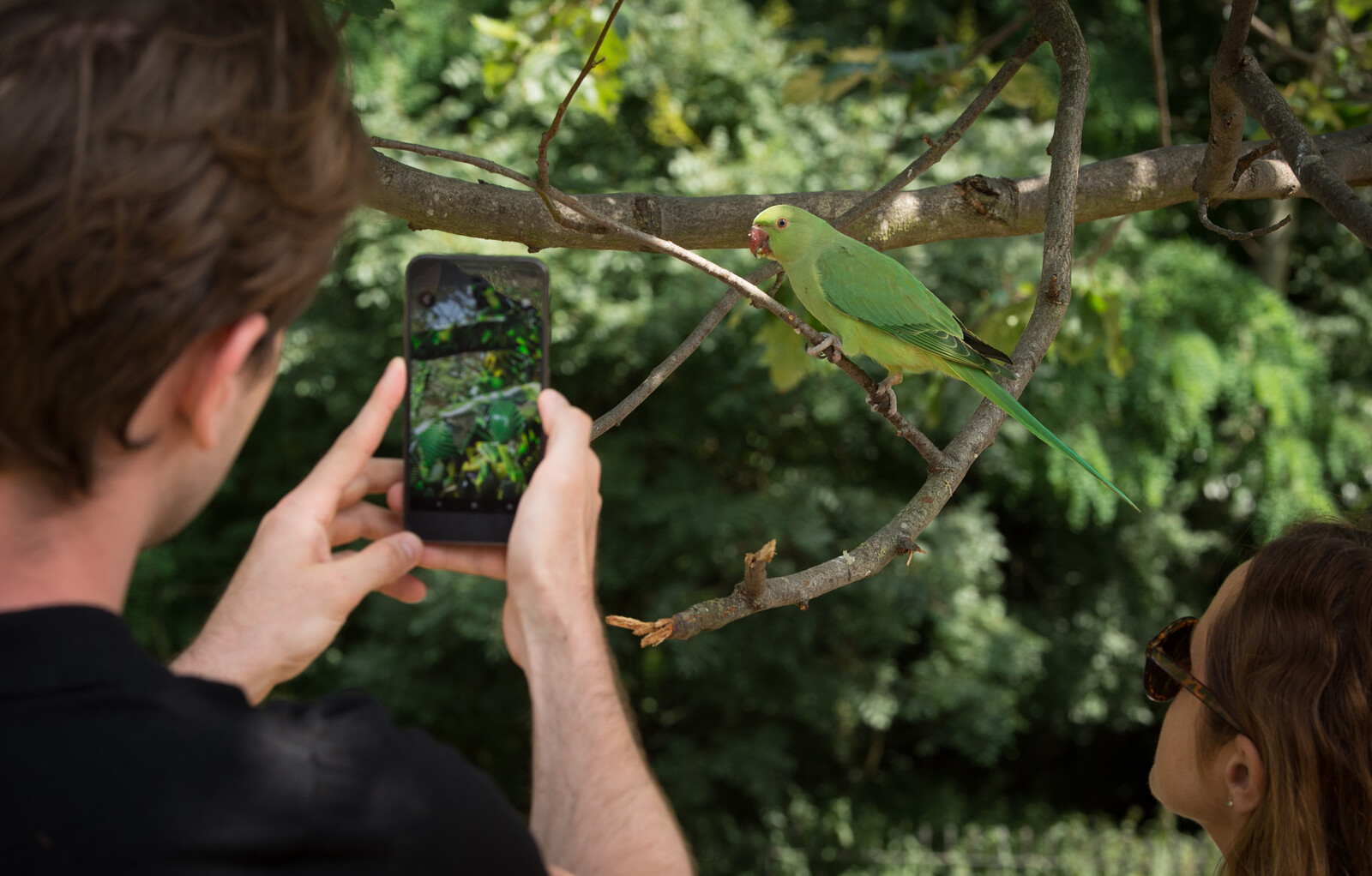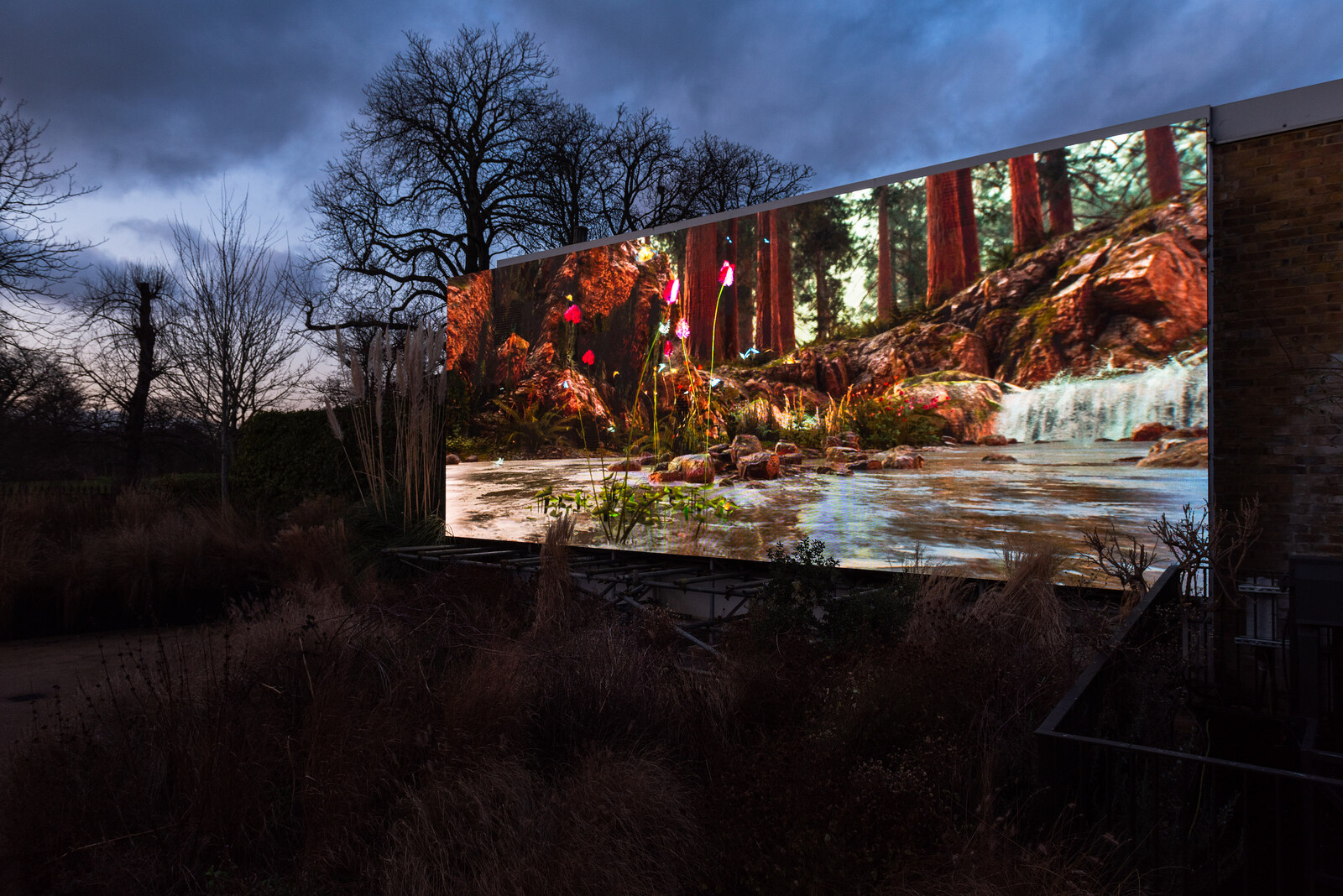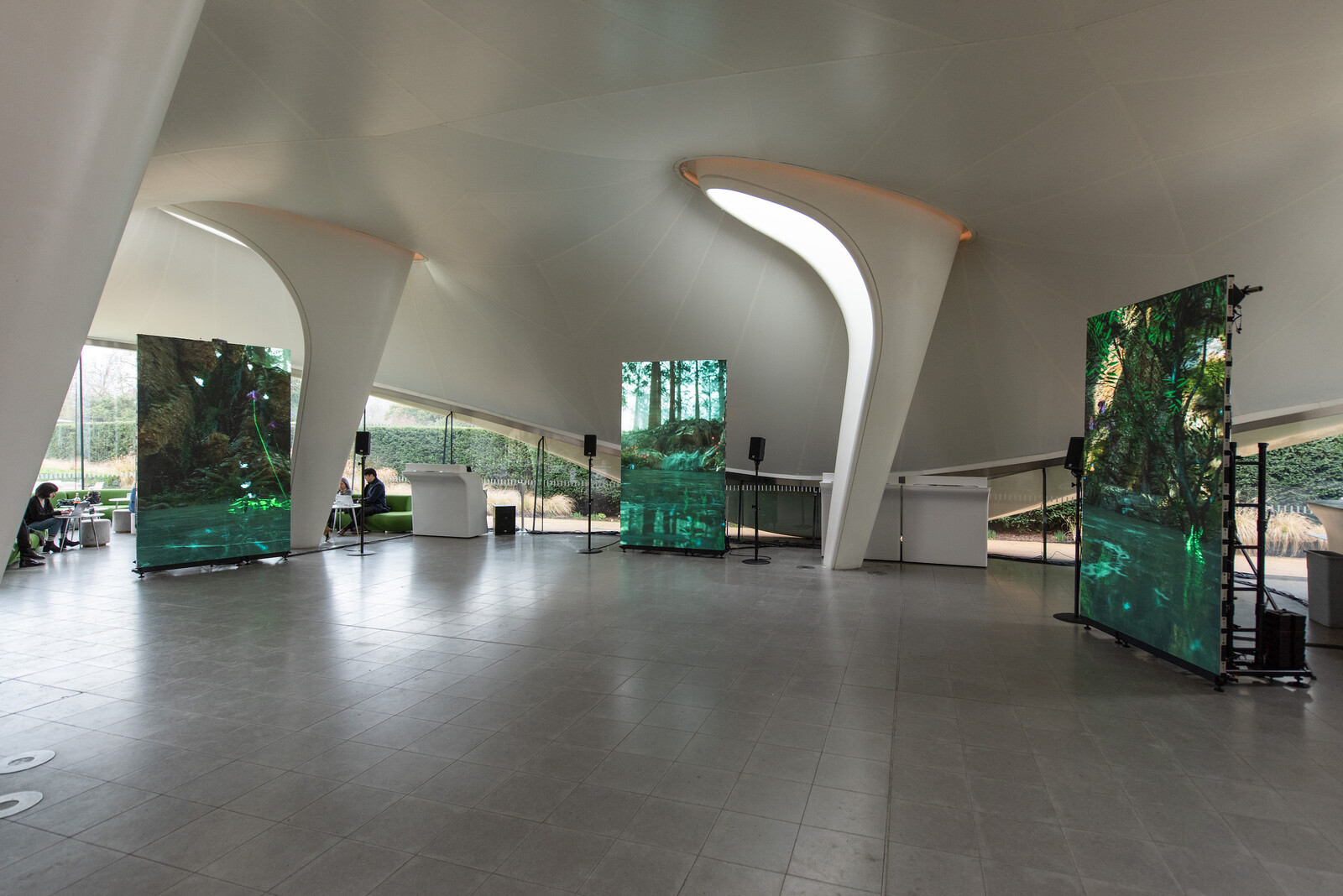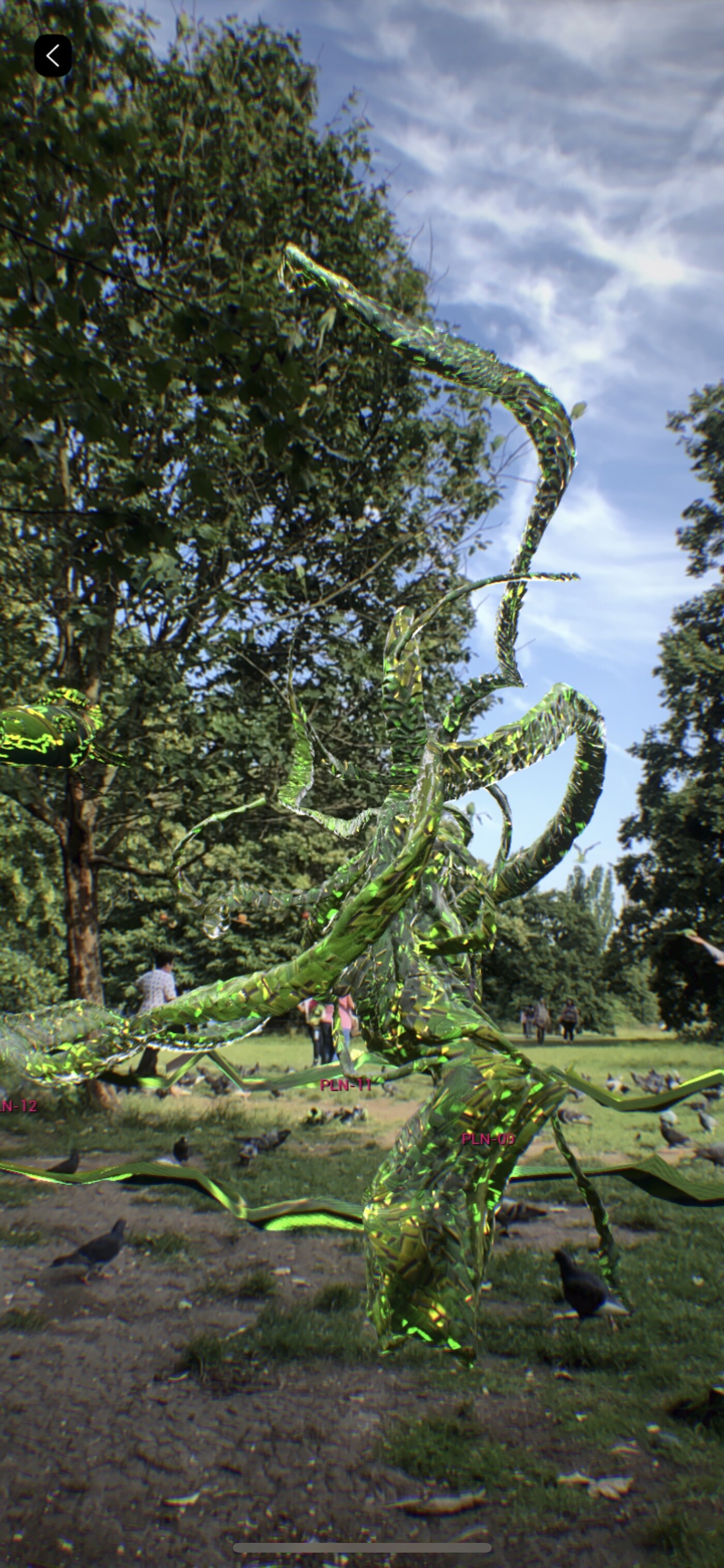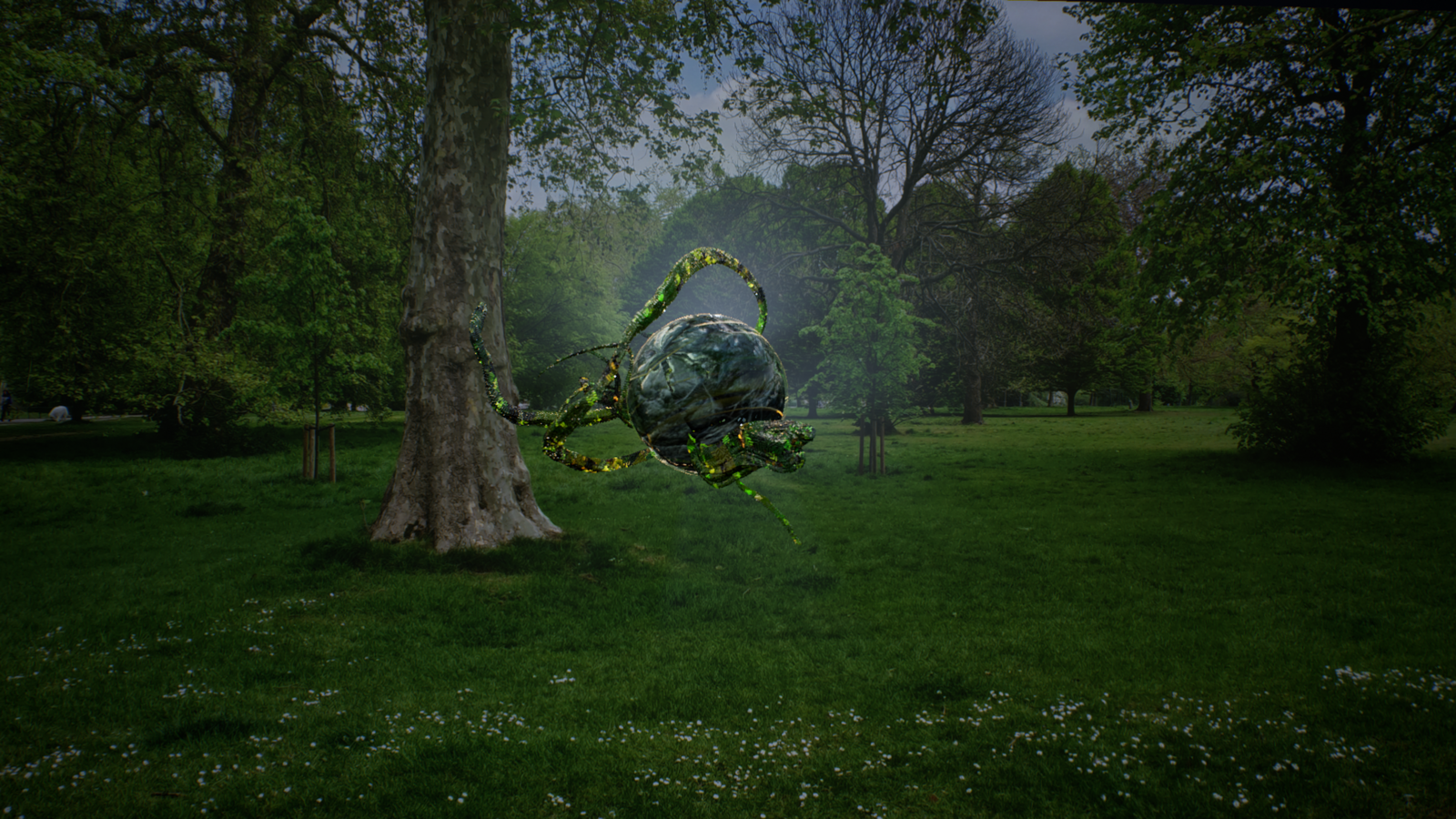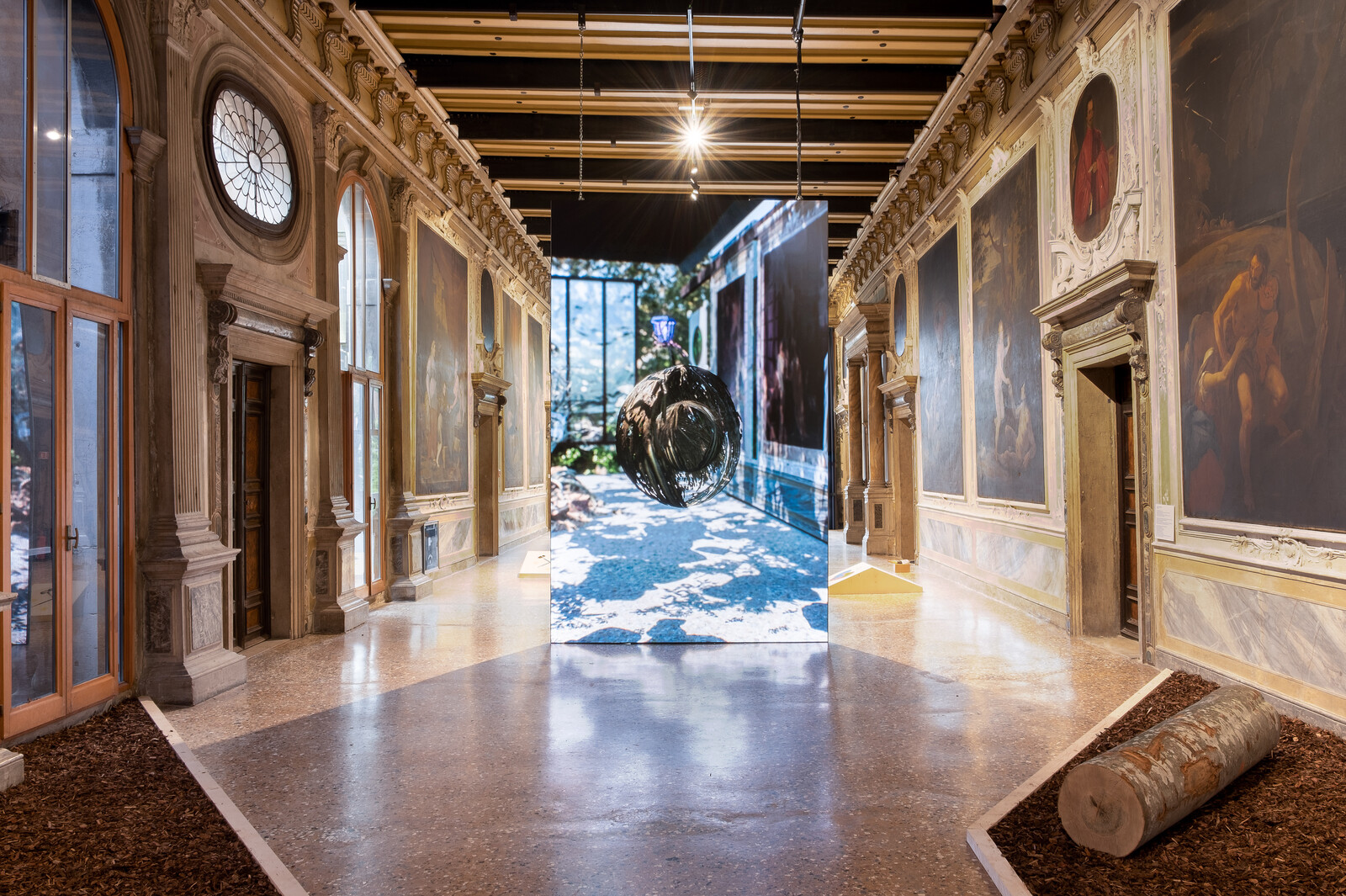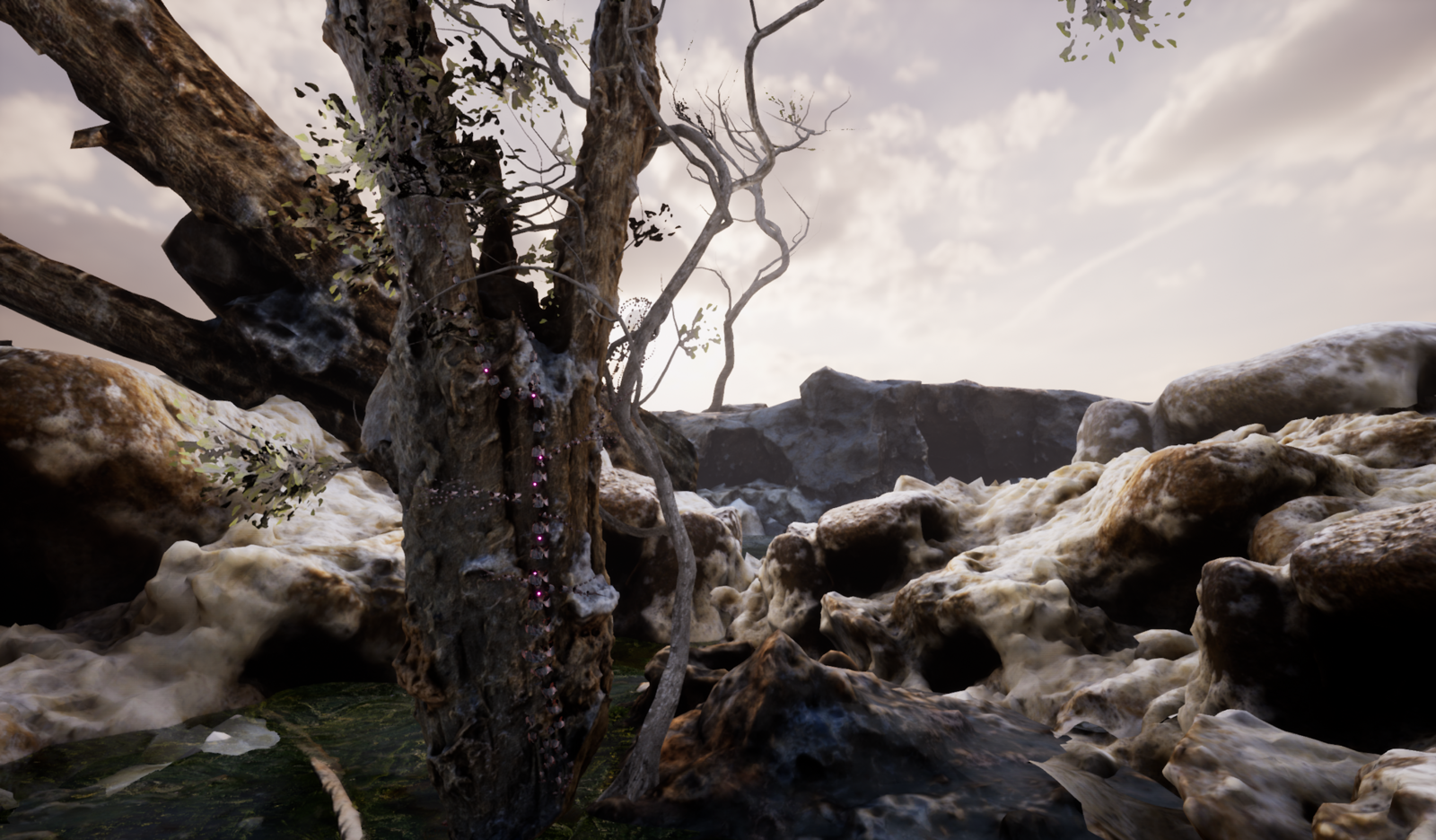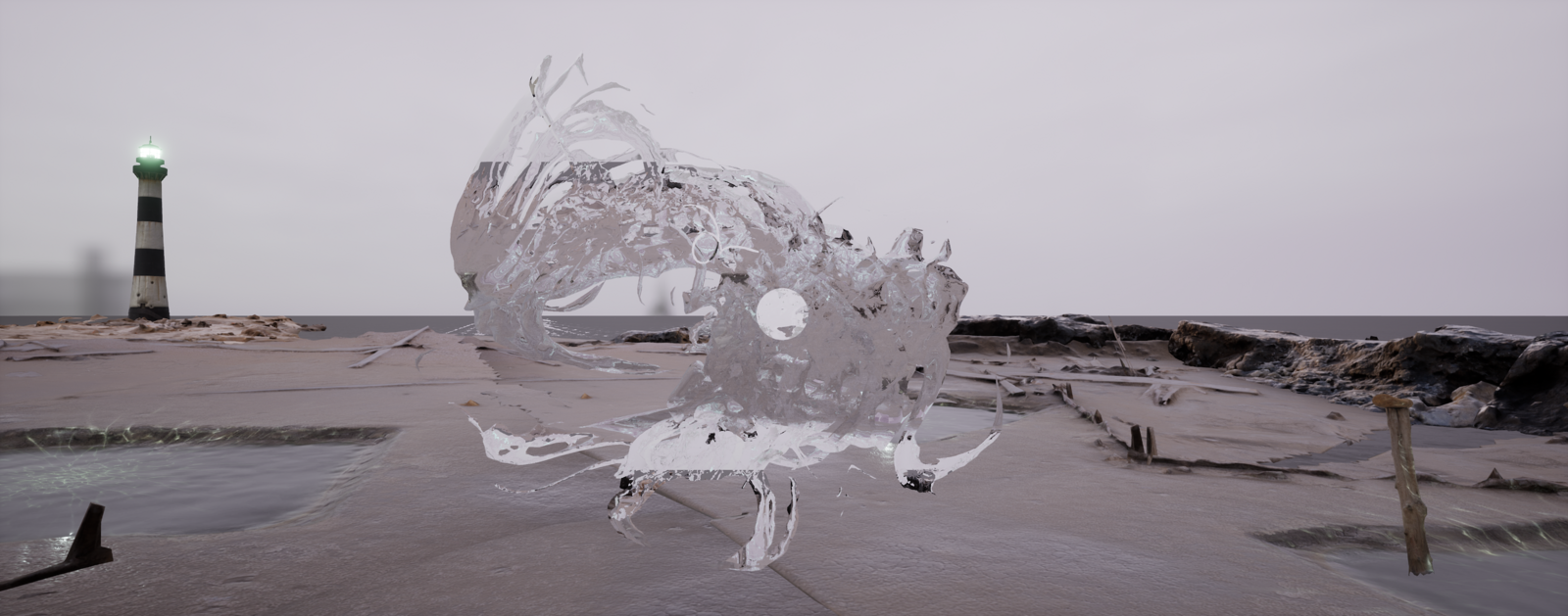I spoke with the artist Jakob Kudsk Steensen from our respective quarantines—me in New York City and Steensen in the south of France, where he was working on a virtual landscape during a residency with the Luma Foundation in Arles. This new project—based on the artist’s detailed studies of the salt marshlands of the Camargue region, using digital technology to create virtual 3D scans of its minerals and simulate their biological properties—builds upon his abiding interest in creating ecologically oriented Virtual Reality (VR) artworks that are tactile, emotive, and fantastical. We spoke at a moment when the virtual—the artist’s primary medium for the last few years—suffused our daily existence in striking ways, from art fairs’ digital viewing rooms to Zoom classes, meetings, and webinars.
The importance of computer games—a source of constant pleasure and intellectual stimulation for both Steensen and myself—was underscored, in March, by the arrival of two new titles: Nintendo’s “Animal Crossing: New Horizons,” the latest iteration in a massively popular and customizable social simulation game set in a village populated by anthropomorphic animals, and “Half Life: Alyx,” a first-person VR shooter that navigates mesmerizing post-apocalyptic terrains, including a quarantined city. Each offers a different mode of richly immersive respite. While the current exodus from the real to the virtual might seem like a temporary solution for art institutions and practitioners alike, it also accelerates the arrival of discourses and realities—the distribution of lived experiences, digital authorship, and relational politics—which were already in motion.
This conversation is a continuation of our ongoing dialogues about art in an ever-expanding field. We spoke about the affective dimensions of games and other virtual world-building practices, post-digital possibilities for art, and its new conditions of access, obsolescence, and agency.
Xin Wang: “Half Life: Alyx” has just been released, yet players are already deviating from the main gameplay in creative ways. For example, there is one area where the player can draw on a large window using a marker. People sketch erotic images and lewd phrases; some even use it as a whiteboard to livestream math classes.1
Jakob Kudsk Steensen: That’s the level of interaction, particularity, and imagination that I relate to when thinking about my own works: making virtual worlds that don’t at first seem to have any objective, beginning, or end. In the context of art, where you don’t need to satisfy the same market objectives, you can make something that consists exclusively of such “in-between” spaces.
XW: The scope for discursive play is likely what makes “Animal Crossing” so engrossing, too. It’s become a cultural phenomenon. New York’s Metropolitan Museum of Art, for example, recently made its collection of more than 400,000 images available for use in the game, allowing players to customize their own environments with famous works of art. Other remarkable features include the details that accurately synchronize with the real world—nuances in weather, season, and marine species—and the powerful customization tools that allow players to virtually enact real-world fandoms and subcultures.
JKS: These environments can become powerful tools that allow players to insert their emotions into virtual space. There’s a deeper psychology to the digital that has a history—through 40 years of interaction—and takes into account even how your fingers move in response to space and sound. It’s a history of craft that, clearly, increasingly appeals to people on an emotional or escapist level.
XW: The psychological need for agency.
JKS: People need to feel playful, and video games evoke powerful, universal emotions. With the art world’s panicked rush into virtual space during the Covid-19 crisis, a lot of the responses have been to convert and replicate what we are now missing—physical reality—in virtual space. But that’s very different from using virtual spaces, connections, and interactivity to evoke different sensations and emotions, which games like “Animal Crossing” are offering to millions of people. And it’s overlooking this history and the type of designs that make virtual spaces uniquely potent.
XW: The migration of large international art fairs onto digital platforms has had uncanny effects. Some simply photoshopped images of artworks into generic, minimal gallery settings with the exact same bench—an abstract signifier of an art space—repeated in every single “view.” It was indistinguishable from online shopping catalogues, and was absurdly unimaginative. Perhaps art fairs, with their financial resources, could partner with the likes of “Animal Crossing.”
JKS: There’s a difference between thinking about art in the virtual realm and using the virtual to make an artwork. Now artists have tools to recreate much of our physical reality; you can imagine walking into the fabric of a painting and simultaneously being embedded in its texture, taking it apart, and reading about the history. There are so many interactive elements that can engage people further. I have also found an increased interest in social online art spaces, and I have started a VR meetup for artists. There are 45 of us and we meet bi-weekly. It feels different from Zoom or Skype in that you can physically move, gesticulate, and explore virtual landscapes together.
XW: We also need a more robust conversation around virtual literacy. There’s the problem of a flattened understanding of the particularities of various virtual spaces, platforms, and technologies: a few images accompanied by a text doesn’t necessarily make an online exhibition, let alone an engaging one. There’s also the level of usership and technical knowledge that art institutions and art practitioners may lack—even in comparison with the general public they aim to serve. Then there’s the internal bureaucracy of sanctioning institutional practices in the digital realm that prevents bold experiments and breakthroughs.
JKS: An institution that has been doing this well is Serpentine Galleries, London, who commissioned my augmented reality work The Deep Listener in 2019. Part of the institution overseen by its Chief Technology Officer, Ben Vickers, taps into the communities involved with digital technology outside of the art field, as well as people who are in professionalized communities that intersect video games, concerts, and which own creative work, while also offering artists who never worked in a virtual medium before an opportunity to do so. But for most other institutions, digital art is often an alien language; with painting the art world has a vocabulary and awareness of styles, communities, histories, and genres. These are also present in digital art, but they are underrepresented by larger institutions. Digital works by famous artists tend to be created by outsourced studios. These are sometimes made with little to no connection to the fast-growing global community of digital artists and curators.
XW: It’s paradoxical that we think of art as a space in which it’s almost imperative to experiment as boundlessly as possible, but in practice there are so many limitations. Some of these limitations are perhaps necessary to ensure intellectual and visual rigor. Other times, it is glaringly obvious that the artist’s autonomy has been eclipsed, especially when compared to other producers of digital media.
JKS: The tragic situation of Covid-19, which threatens the existing institutions and workers that rely on public engagement to survive, justifies the rush to establish an online presence. But what does it mean for the public? Over the course of a few weeks, there was an overload of web-based content. The crisis has returned us to a basic level of survival: people need food, medicine, income, and emotional respite. As a digital artist, I feel a greater need to make something that’s very basic and true to why I’m making art, and to make a virtual work closer to the bodily sensations of experiencing the landscape and texture of where I’m currently situated—the Camargue region in France.
During quarantine, it’s important to have alternative sources of sharing and connecting. This is where art institutions can play an important role in offering something different from the media corporations, commercial games, social media platforms, and streaming services like Netflix, where these companies own and produce how people express themselves emotionally to such a great extent. It’s a dystopian scenario when people’s emotional experience comes from three global companies. The more people who use only Instagram and Facebook and a few major games, the more these dictate our reality.
The first week into the quarantine I just felt grosse fatigue—to borrow the title of the 2013 video by Camille Henrot—from all this media content. In the second week, I was getting used to the idea that the virus is here to stay, and has broad social implications. In the third, I began to think about how artists can participate in this new way of existing. There could be another pandemic. Maybe this is something that society has to be ready for. It’s very important to think beyond how artists and institutions can convert their capital into something virtual, and talk about new channels of access. It’s a moment in which to rethink the whole system of virtual culture and how it’s structured.
XW: This sounds like an attempt to make the virtual substantial. Despite its centrality to our lives, we still tend to have this hierarchical order: reality and its virtual counterpart. Perhaps our collective digital living during Covid-19 could result in a boost to the general population’s baseline tech-savviness that will counter such biases.
JKS: What someone produces for museums in the future could be very similar to studio-produced games, and reach a general audience. Imagine putting the same ambition, team, and budget you would do for a show at the Whitney Museum of American Art, for example, into making a virtual art work that 200,000 people might download. I think the art world is slowly moving towards this point.
In the foreseeable future, however, people might not want to share the same wearable devices with strangers any more, which is how VR artworks have been shown up until now. Ironically enough, now that everything is virtual, showing a virtual thing in a physical space with VR is very complicated. That creates a radically altered context for the VR project I’m currently working on with the Luma Foundation. So now I’m thinking about how a work like that could evolve into something that is fully virtually distributed, which means something different to simply putting an artwork online. I’m converting my existing VR works into immersive installations without headsets, and I am creating new formats where they can be experienced on laptops and phones.
When you make work people can download, you enter a public digital realm. And whenever art enters public space, it needs to connect multiple stakeholders. Making a work available online is as complex as realizing a major public artwork on Manhattan. Yet conventional categories bound by physical venues have less meaning in virtual space. To the public, a digital artwork may feel comparable to watching a David Lynch film, playing “Half Life: Alyx,” or spending time on social media. An artwork will need to appeal and stand out. Art can offer new, poetic ways of sensing virtual space. It’s not just a few thousand downloads of something that people had already seen in a museum, but really a new kind of artwork, from the art world, from an art institution, made to be fully distributed online.
XW: One thing that is tricky to recreate virtually is the communal experience of viewing art. The viewing experiences are never perfectly synchronized, but that social space is crucial. At the same time, that communal aspect has already become technologically available: user-generated commentaries alongside screened content, for example, can produce the sensation of shared participation. When the Oculus Go VR headset came out, you and I spoke about how these more affordable and portable headsets can bring about a more substantial virtual presence and togetherness for the general public.
JKS: For my current project with the Luma Foundation, my Brooklyn-based sound collaborator, Matt McCorkle, meets me inside a VR environment, where we have seamless online connectivity. People can log into the virtual landscape I’m making from anywhere in the world and see it. So the tool is already there. It would be helpful if larger cultural institutions assisted in the creation of public access points to ambitious virtual artworks. Right now, the type of work I make is primarily shared within physical institutions; there is no significant cultural institution behind any downloading platform such as Steam, the video game distribution website. I’m interested in taking existing institutional frameworks—let’s use the Whitney in New York as an example here too—and using their resources to maintain the infrastructure, a server, that will allow thousands of people to log in.
XW: Another issue with user-end gadgets is accessibility. The access to the internet, a laptop, a Nintendo Switch console, or even the mental space to engage with the virtual—these are not equally distributed. The ability to monitor the pandemic and produce reports, data, and projections is considered an unattainable luxury in many parts of the world.
JKS: Covid-19 has been very revealing of wealth and digital accessibility gaps. Once you are thinking about digital art, you likely already have access to at least a cellphone, and if you don’t, then you are talking about distributing culture at a far more foundational scale. I’m not someone who thinks that all art should be virtual; I have a bit of virtual phobia, in the sense of not wanting to make my art too close to the aesthetics trending on dominant platforms. I’m mainly thinking: How can art offer something that’s different to what has come before, especially when physical experiences are limited? Who even has access to the virtual realm, and how widely available am I making my art? Those who own VR headsets likely have access to “high art” already.
This is something we thought about a lot when I worked on The Deep Listener, where we invested lots of effort in design and optimization—as in how little computing power can be used to run the artwork, and the bottom line turned out to be an iPhone 6. Beyond that, you can’t even make this type of augmented reality artwork at all. It was super challenging to be able to optimize it down to the technological parameters of an iPhone 6; lower than that would require a very different artistic strategy. Text message could be one possibility, actually—we can make distributed text message poems.
XW: Artists have to navigate this position of pursuing something at the cutting edge, while simultaneously thinking about audience, compatibility, and optimization. It’s mind-blowing just how specific that boundary of technological accessibility is.
JSK: I am fortunate to have this current project with the Luma Foundation to sustain me through this period. For six months, I have been working in the salt marshlands of the Camargue region. I am 3D-scanning and recording the life of salt, algae, and bacteria directly in the landscape together with field biologists. When I work in the field, sometimes with water up to my waist or covered in mud, I feel as if I am entering an inner psychological space. In virtual environments, you use the same basic senses as you do with any other art form. Environmental sensibility and immersion are the sources of my inspiration, but I primarily work digitally. I think this dichotomy is what drives my work. When I work outside in the field, I feel calm; but I feel stressed and outside of my body when doing admin work on a flat screen at home. Through virtual world-making, I combine these two modes of existence into something that feels both corporally and intellectually meaningful to me. The virtual can be intellectual, emotional, and sensory through sound, space, light, and texture. I think we need more of that in digital culture today.
Online listicles from the game, featuring screen shots and gifs submitted by players, speak to the high level of interactivity in the gaming environment. See, for example: https://mp.weixin.qq.com/s/A7CrYJ15iM0WAm4Kt7Ddlg.

